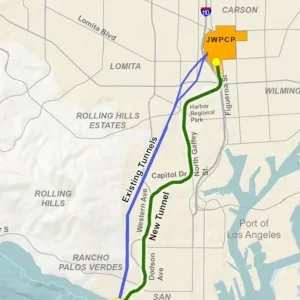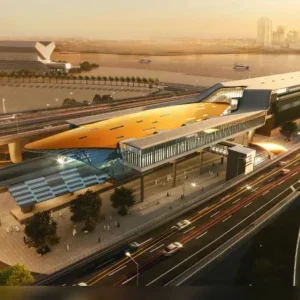
“We expected an easy tunnel,” said a company spokesman, “but the challenges we faced were quite demanding.” These included a dramatically increased need for injections – 125 in total – which consumed 2.370t of cement. As a result, an extra counter excavation had to be undertaken.
Drilling and blasting below a densely-developed urban area had to be undertaken according to strict vibration limits. Problems were further exacerbated by the pandemic which, with its travel restrictions, resulted in available labour supply coming almost to a complete standstill. Despite the hurdles, the team persevered to complete the excavation successfully.
Marti project manager Andreas Greipel said: “This has really been a solid team effort and I’m proud of the work we have done here. We have been able to do all this without any personnel injuries, which is also very important.”
Designed by Cowi for Oslo’s water and sewage authority, the Skullerud–Enebakkveien project involves the construction of a 3,320m main tunnel (plus two access tunnels) to house a new steel 1,000mm drinking water pipe that will complement the Norwegian capital’s existing supply network.
The pipe tunnel will stretch from Skullerud, northeast to Enebakkveien. Blasting on the US$38m project began in May 2019 at the Skullerud portal in southeast Oslo, around 8km from the city centre.
The design and build contract includes: a 155,000m³ of drill and blast to create a 3,320m main tunnel with 23-30m² excavation profile; two access tunnels of 100m and 200m lengths; two 7m-deep shafts from main tunnel to surface; three pre-cuts with concrete portal; a technical building; installation of a new 3,320m-long steel pipe of 1m-diameter; and systematic pre-grouting for 1,400m of tunnel. An underground facility for reloading of rock was also included.
The Schaeff ITC312SL tunnel excavator used on the project was delivered to the Skullerud construction site in April 2019 having previously been on display at the Bauma 2019 exhibition in Munich.







